SNVSAR6B December 2016 – March 2018 LMR23630-Q1
PRODUCTION DATA.
- 1 Features
- 2 Applications
- 3 Description
- 4 Revision History
- 5 Product Portfolio
- 6 Pin Configuration and Functions
- 7 Specifications
-
8 Detailed Description
- 8.1 Overview
- 8.2 Functional Block Diagram
- 8.3
Feature Description
- 8.3.1 Fixed-Frequency Peak-Current-Mode Control
- 8.3.2 Adjustable Frequency
- 8.3.3 Adjustable Output Voltage
- 8.3.4 Enable/Synchronization
- 8.3.5 VCC, UVLO
- 8.3.6 Minimum ON-time, Minimum OFF-time and Frequency Foldback at Dropout Conditions
- 8.3.7 Power Good (PGOOD)
- 8.3.8 Internal Compensation and CFF
- 8.3.9 Bootstrap Voltage (BOOT)
- 8.3.10 Overcurrent and Short-Circuit Protection
- 8.3.11 Thermal Shutdown
- 8.4 Device Functional Modes
-
9 Application and Implementation
- 9.1 Application Information
- 9.2
Typical Applications
- 9.2.1 Design Requirements
- 9.2.2
Detailed Design Procedure
- 9.2.2.1 Custom Design With WEBENCH® Tools
- 9.2.2.2 Output Voltage Setpoint
- 9.2.2.3 Switching Frequency
- 9.2.2.4 Inductor Selection
- 9.2.2.5 Output Capacitor Selection
- 9.2.2.6 Feed-Forward Capacitor
- 9.2.2.7 Input Capacitor Selection
- 9.2.2.8 Bootstrap Capacitor Selection
- 9.2.2.9 VCC Capacitor Selection
- 9.2.2.10 UVLO Setpoint
- 9.2.3 Application Curves
- 10Power Supply Recommendations
- 11Layout
- 12Device and Documentation Support
- 13Mechanical, Packaging, and Orderable Information
Package Options
Refer to the PDF data sheet for device specific package drawings
Mechanical Data (Package|Pins)
- DDA|8
- DRR|12
Thermal pad, mechanical data (Package|Pins)
Orderable Information
7.8 Typical Characteristics
Unless otherwise specified the following conditions apply: VIN = 12 V, fSW = 400 kHz, L = 8.2 µH, COUT = 150 µF, TA = 25°C.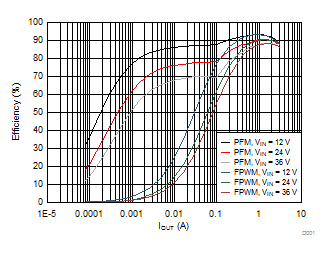
| fSW = 400 kHz | VOUT = 5 V |
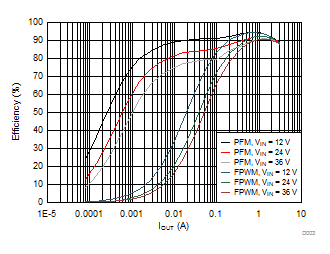
| fSW = 200 kHz (Sync) | VOUT = 5 V |
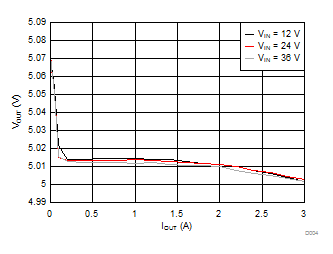
| PFM Option | VOUT = 5 V |
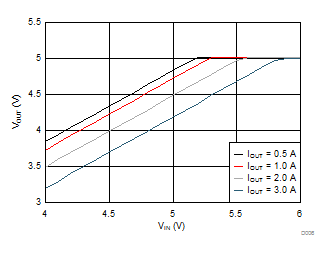
| VOUT = 5 V |
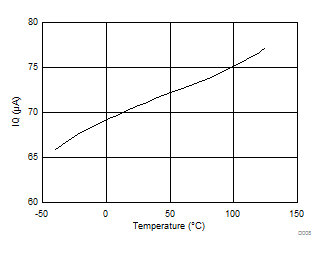
| VIN = 12 V | VFB = 1.1 V |
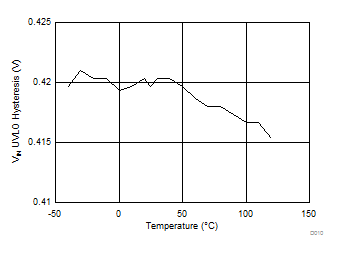
Figure 11. VIN UVLO Hysteresis vs Junction Temperature
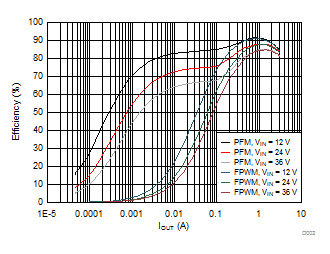
| fSW = 400 kHz | VOUT = 3.3 V |
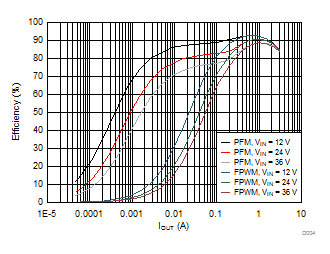
| fSW = 200 kHz (Sync) | VOUT = 3.3 V |
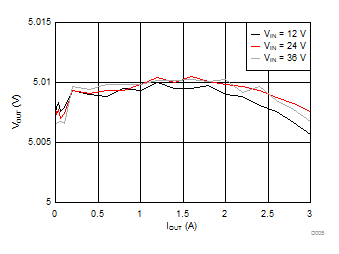
| FPWM Option | VOUT = 5 V |
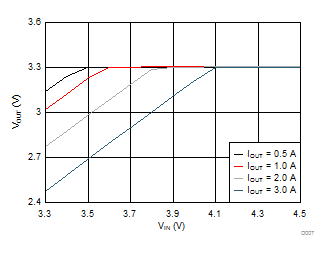
| VOUT = 3.3 V |
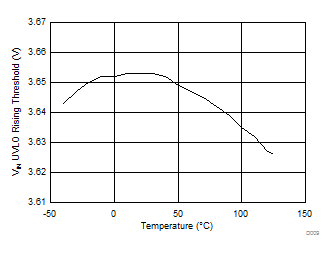
Figure 10. VIN UVLO Rising Threshold vs Junction Temperature
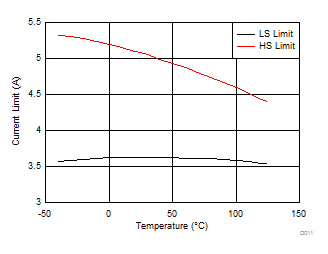
| VIN = 12 V |